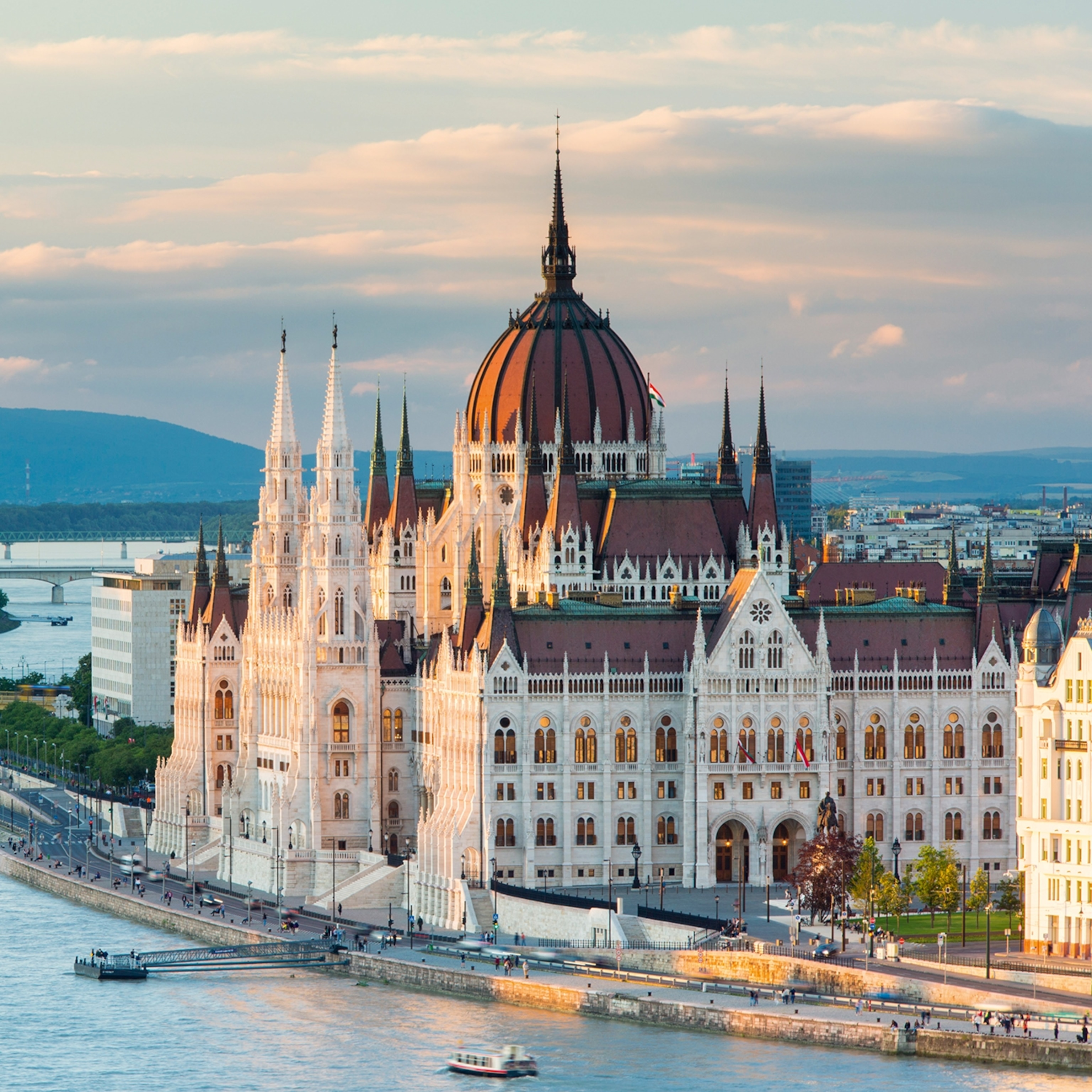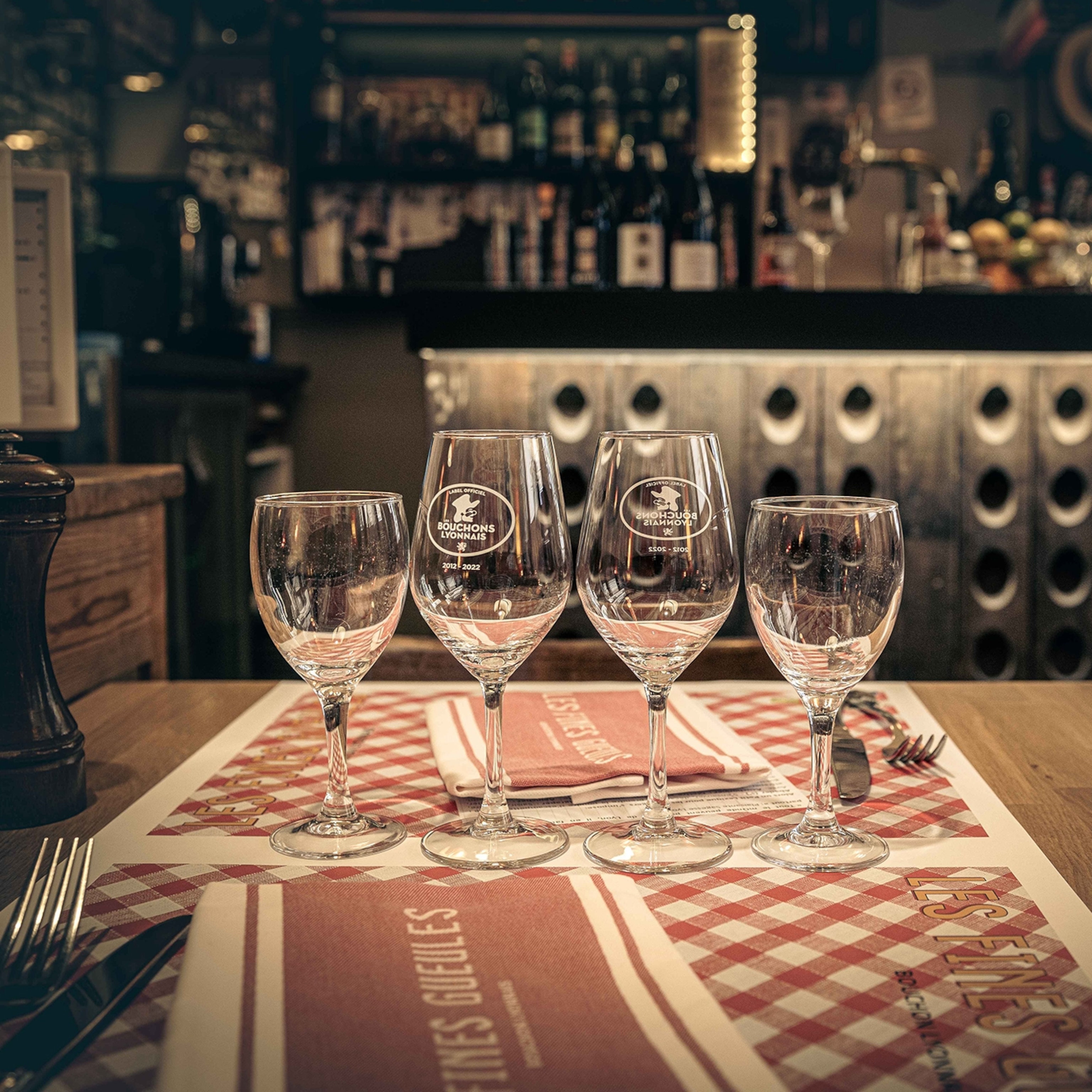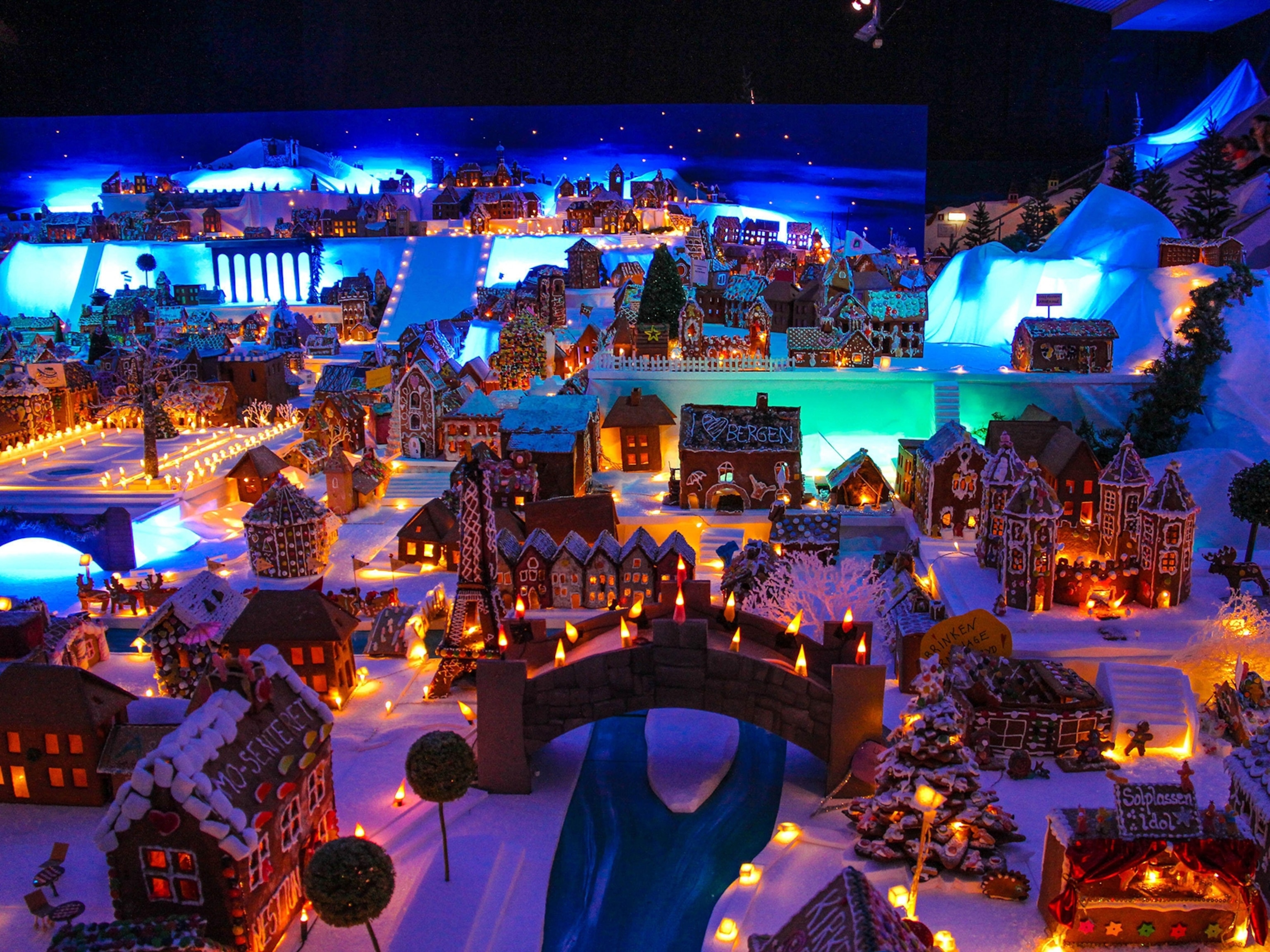
Discover truly local markets and traditional cuisine in Budapest
The Pearl of the Danube is known for its bathhouses, cafe culture and, of course, the mighty river that bisects it. But stray beyond the headline attractions and the beating heart of the Hungarian capital is to be found in its local markets.
“Bloody cheap and terrible quality,” declares my straight-talking guide, Andrea Wurmb, as she arrives at our meeting point, a wine kiosk in the Blaha Lujza Square metro station. I’m no oenophile, but given that the wine at this kiosk is dispensed from a pair of plastic vats into recycled soft-drinks bottles, I suspect Andrea’s not just being a wine snob. She leads me away towards the exit, past a range of stalls selling everything from toasters to bunches of flowers. “Lots of locals come here to buy things because the prices are far lower than on the high street — but only alcoholics would buy that wine,” she says, bluntly. “I’ll find you a proper wine shop.”
We climb the steps back to street level, emerging like moles into the cold sunlight of late December, before strolling south along the Grand Boulevard that arcs around the centre of Budapest. I’ve asked Andrea to show me the ‘real’ city, the markets and stores where locals come to do their daily shop, rather than the high-end boutiques and souvenir outlets that most tourists encounter in Hungary’s capital. And Andrea’s taking her mission seriously. She strides purposefully along the pavement while I hurry to keep up. “Walking is the only way to see a city,” she calls over her shoulder, as I’m whisked past doors with lion-head knockers, and arched entrances that offer tantalising, split-second glimpses of ivy-clad courtyards.
(Zulu Muthi Market)
“Ah, here we are,” Andrea says with satisfaction a few minutes later as we reach a shop called Borháló, where the shelves are full of bottles. Hungarians are proud of their wine — it’s said that you can divide the population between those who make it and those who dream of doing so. And at Borháló, the manager has the look of a man who would faint at the notion of dispensing wine into recycled soft-drinks bottles. “Welcome,” he smiles. “We only sell Hungarian wines, along with a few from Hungarian producers in Serbia and Romania.” The choice of bottles from the 22 wine regions goes far beyond the heavy bull’s blood red and sweet Tokaji dessert wines that people tend to associate with the country. I’m shown light whites from Badacsony in the west, full-bodied reds from Villány in the south, and wines made from indigenous grape varieties with tongue-twisting names such as Cserszegi Fűszeres, Hárslevelű and Királyleányka.
I choose a bottle at random, and the manager compliments me on my choice, before pressing upon me a shot of something stronger from a clear bottle labelled ‘Pult Alatti’. “It means ‘under the counter’,” he chuckles, handing me a tulip-shaped glass. “We make it ourselves.” This is pálinka, a fruit brandy imbibed at weddings, after meals and even — by hardy sorts in the countryside — at the breakfast table. The spirit is most commonly distilled from apricots, pears or plums, but Hungarians say that whatever’s good for jam is good for pálinka. Many believe it has medicinal qualities, too, and, after raising my glass to the manager and knocking back the contents, I see it could certainly cure a headache — by blowing your head off.
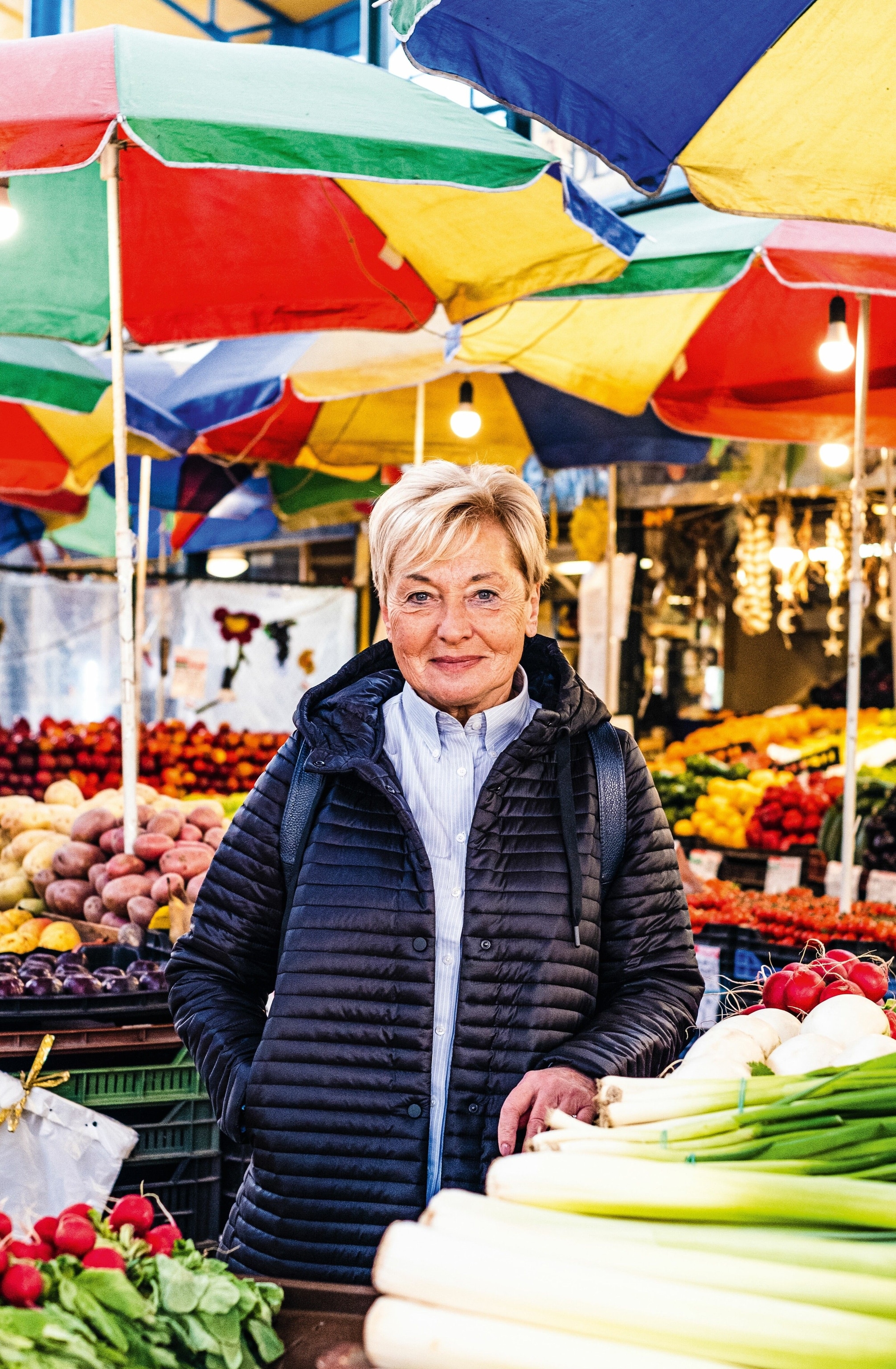
Once my eyes have stopped streaming and Andrea has stopped laughing, we leave the store and cross the road to Rákóczi Square. “Under communism, Rákóczi Square had a bad reputation,” Andrea confides. “It was the place where, how shall I say?” — she pauses, coyly — “‘cheap ladies’ would gather.” It’s a smart enough spot now, though, with plane trees, benches and a children’s playground. Filling the eastern side is an elegant building of peach-coloured brick with a central archway two storeys high, a work of architectural ambition that you might expect of a grand railway station or national museum. But this is a market.
Rákóczi Square Market Hall was the second of five covered markets constructed across Budapest at the end of the 19th century. They’re all still operating and each one is a key thread in the tapestry of life for residents, who visit to pick up fresh ingredients for home-cooked meals. Best known is the Great Market Hall, near the river at the southern end of pedestrianised Váci Street. It’s big and lively, with stalls selling everyday essentials alongside traditional Hungarian products that make perfect souvenirs. It’s rightly a tourist favourite. But it’s clear that Rákóczi Square Market Hall offers a more authentic experience for someone wanting to get under the skin of the city.
“You won’t find tourists here, that’s for sure,” says Andrea, as we pass through the monumental entrance, designed to allow horse-drawn carriages to drive in and unload. Inside, the tiles on the floor are red and cream, and the roof is supported with a network of blue, barrel-vaulted iron girders. It looks like an industrial-style cathedral. The aisles are lined with stalls specialising in foods of all kinds. Shoppers cluster at a stand hung with salamis, beef ribs and slabs of pork belly. Glass jars of multicoloured pickles, baby corn and cabbage-stuffed peppers crowd the shelves of another stand like specimens in an old apothecary. This is a building of energy, smells, noise — and beauty. It provides a truer snapshot of Budapest life than any museum exhibit or riverside tourist trap.
A stallholder sweeps her hand across the products before her, inviting me to browse. She’s of East Asian origin, as are several other traders here. “In the past, the market was staffed only by Hungarians, but there are lots of immigrants from China now,” says Andrea. I wonder whether this has caused tensions; the country’s prime minister, Viktor Orbán, has made headlines internationally for his populist statements decrying the impact of immigration. “Ah, Orbán makes a big thing of it, but for us locals, it’s not an issue at all,” says Andrea, dismissively.
A cuddly toy cow with prominent udders has pride of place at the dairy stand, where a lady in a white hat ladles sour cream into a container for a customer. “See how rich and thick it is,” says Andrea. “Not watery like in the supermarkets. The quality is so much better here, and the prices are lower.” Nearby, a hefty carp with pink fins mouths the side of its tank. The fishmonger sees me watching, and lowers a net to stir a whiskery catfish from the bottom. Freshwater specimens from Hungary’s rivers and lakes are cooked in an earthy-tasting fish soup called halászlé that’s popular all over the country, and you’ll find tanks like this in each of the market halls.
“Now, my lentils,” says Andrea, before firing a question in rapid Hungarian at the fishmonger, who points to a shop in the corner. “The good thing about this market hall is you can speak to people,” says Andrea, as she bustles away. “That’s not so easy in the Great Market Hall.” The shop in the corner has a tall wall of drawers containing dry foods: cashews, pecans, banana chips, chocolate-covered cherries, butterbeans and much more. “There they are,” she nods, opening a drawer and scooping the pulses into a bag. “Lentils look a bit like coins, so it’s traditional to eat them on 1 January to guarantee a prosperous year ahead.” She assesses the bag, and then adds another scoop. “I’m going to be so rich!”
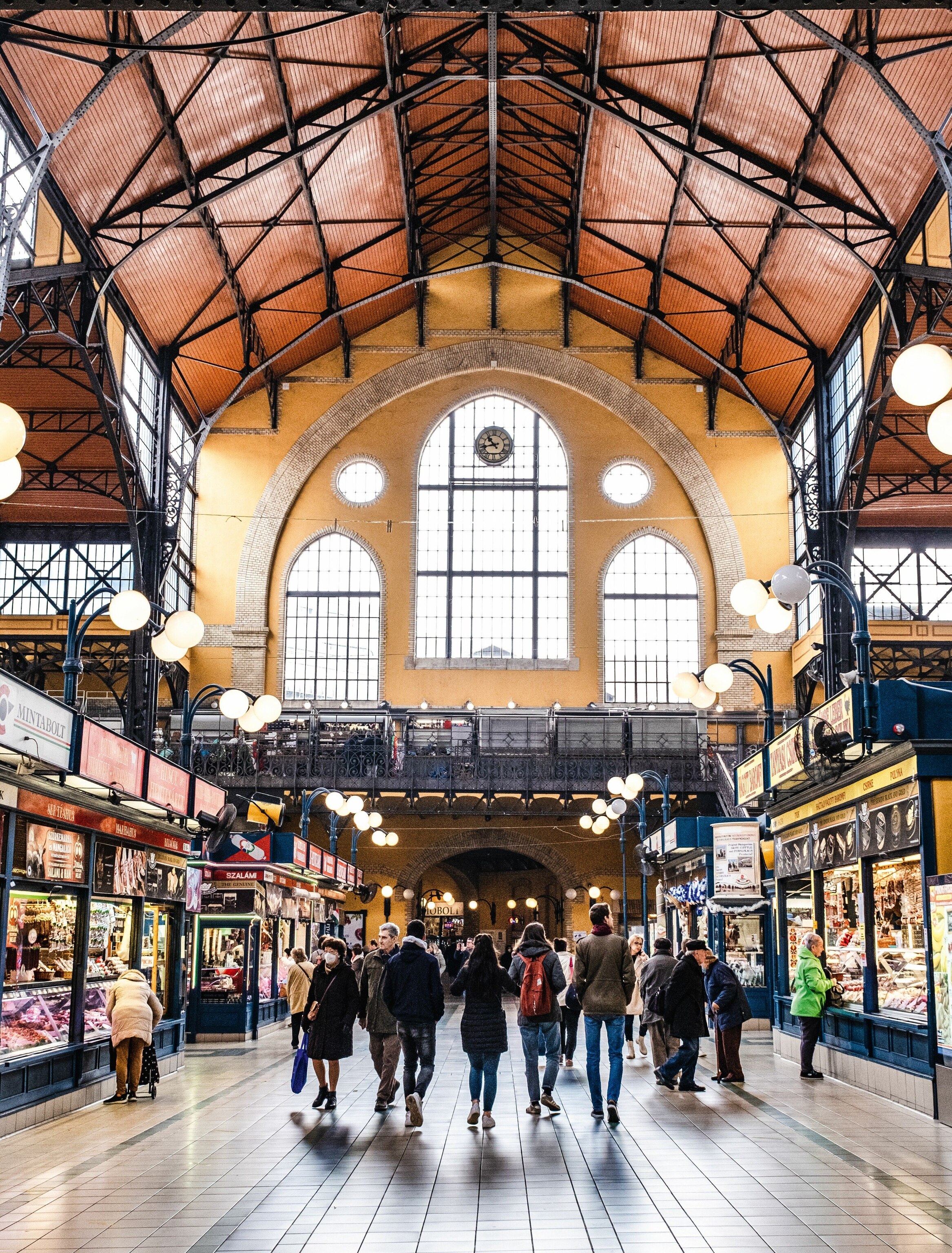
A district on the up
People have needed all the good-luck lentils they can guzzle in recent times. Andrea has been a tour guide since 2000, but the pandemic forced her to seek alternative work as a German teacher. “Some of my favourite restaurants have closed,” she says. “Many workers in the hospitality industry had to find other jobs. Now the world is opening up again, the number one problem is the lack of trained staff. On some days, even Gerbeaud [Budapest’s most prestigious cafe] has had to leave customers queuing outside because it didn’t have enough people to serve them. Can you imagine? At Gerbeaud?”
But for all the challenges, Andrea is upbeat. Rákóczi Square is in the Eighth District, for many years a tatty, overlooked portion of the city that lay in the shadow of the more fashionable Jewish District to the north. Given how neglected it became, it’s remarkable to think the area was once the most desirable of neighbourhoods. “It’s called the Palace Quarter,” Andrea tells me, as we walk along Brody Sándor Street. “Each of these residences has a history. Many famous people lived in them — aristocrats, composers, artists, politicians…” As did, it seems, a less-glamorous resident, with rougher hands and more dirt beneath his fingernails. “A beloved local chimney sweep once lived here,” says Andrea, as we stop outside a house with mustard walls. “There used to be a bust of him above the door.”
Now the Palace Quarter is enjoying a revival. Its flaking facades are getting fresh licks of pastel-coloured paint and plaques recording their histories. We pass a powder-blue house that was owned in the early 19th century by leading playwright József Katona, who wrote the historical tragedy Bánk Bán, a staple of Budapest’s theatres. We pop into a tiny pharmacy that’s been here since 1923, complete with folksy art-nouveau oak cabinets and drawers. “We still have the original weighing scales, too,” says the pharmacist, showing me the handsome, marble-bottomed contraption on the counter.
The Palace Quarter’s change of fortune isn’t restricted to architecture. It’s also becoming a popular place for food, drink and culture. We turn left down Szentkirályi Street and follow it to Mikszáth Kálmán Square, where Andrea pulls me into a bar on the corner called Tilos A Tilos (Forbidden is Forbidden). It has stripped brick walls and a barman who nods at me while polishing glasses with a cloth; all reminiscent of a scene from a black-and-white film. “During communism, this was where everyone who was an enemy of the system came,” Andrea reveals. “Frank Zappa played here in 1991.” Today it’s trendy, just like the bar next door that hosts live music and literary readings, and the restaurants along Krúdy Street with menus on boards advertising good-value soups and stuffed cabbage.
A statue of the portly author Gyula Krúdy gazes down over the street that takes his name. “Krúdy was always writing about food,” says Andrea. “I can’t read his novels without feeling hungry.” She stares at the statue wistfully for a moment before checking her watch with a start. “Oh, that reminds me, it’s lunchtime — I must go!” And, with a warm farewell, she hurries off home with her bag of lentils and her high hopes for better times ahead.
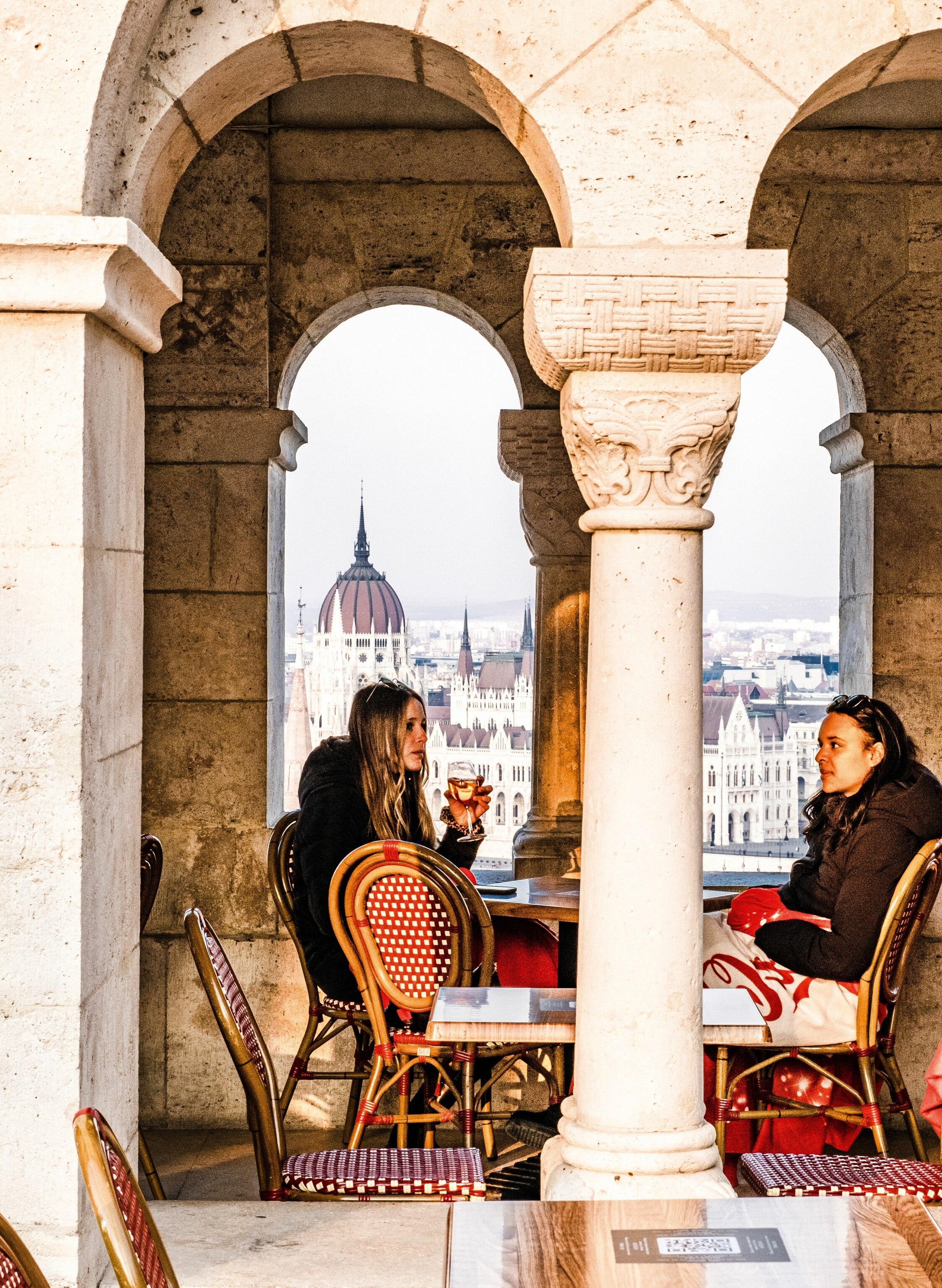
In conversation with culinary tour guide Nelli Hajba
Tell us about typical Hungarian fare
Hungarian dishes tend to include meat and dough. We do dough in every form, from baked to fried to boiled. We have lots of indigenous livestock, including grey cattle and mangalica pigs. And we use a lot of paprika, which was introduced by the Turks when they ruled. When I travel, I always take my Hungarian paprika with me.
And drinks?
I could spend hours showing you the different kinds of alcohol we have! There are digestifs, aperitifs and wines from 22 regions. If you eat too much, there’s no better remedy than a shot of pálinka [fruit brandy] or Unicum [herbal liqueur].
How has the food scene changed in recent years?
There are fewer and fewer csárda — restaurants serving traditional food. That’s a shame. But most restaurants still include classic dishes like goose liver on their menus, and have Hungarian wines from local wineries. Although it’s sad that some old restaurants closed during the pandemic, it’s offered opportunities for young restaurateurs with new ideas. That’s exciting.
Nelli Hajba is a Budapest local and founder of Nellicious Travels, leading food-related tours and culinary experiences in the city. Her private, three-hour food-tasting tour costs from £45 per person. nellicioustravels.com
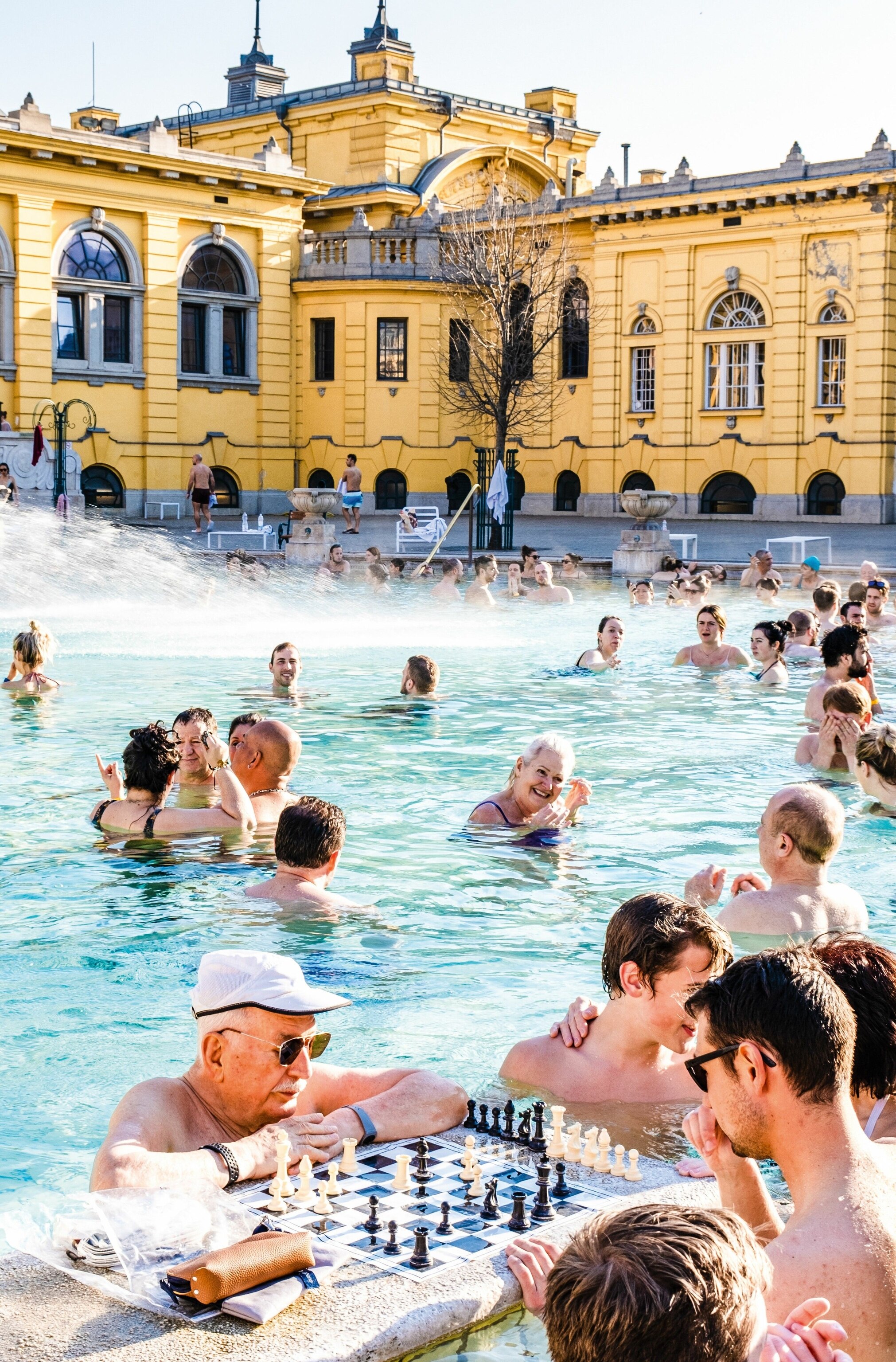
Getting there & around
There are regular direct flights to Budapest from 12 UK airports, including Bristol, Birmingham, Leeds, Liverpool, Manchester, Edinburgh and the main London airports. Carriers serving the route include British Airways, EasyJet, Ryanair and Wizz Air. Budapest is a compact, walkable city. It also has a comprehensive public transport system of buses, trolley buses, trams, overground trains and a metro. Tickets should be validated at machines at station entrances or when boarding vehicles.
When to go
Summer is high season (be aware that temperatures can top 30C in July and August), there are vibrant cultural festivals in spring and autumn, the Sziget music festival in August and lovely Christmas markets in winter.
Where to stay
Matild Palace Budapest. From £230, B&B. matildpalace.com
Corinthia Budapest. From £175, B&B. corinthia.com/budapest
How to do it
Tui offers a three-night city break package to Budapest for two people, starting from around £500, including B&B accommodation at the Arcadia Hotel Budapest and flights. tui.co.uk
Published in the June 2022 issue of National Geographic Traveller (UK)
Follow us on social media
Facebook | Twitter | Instagram
